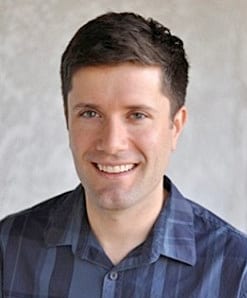By Leslie Gordon
 The World Bank’s internal watchdog does not have the authority to enforce the bank’s social and environmental policies, according to a new report by Berkeley Law’s International Human Rights Law Clinic (IHRLC).
The World Bank’s internal watchdog does not have the authority to enforce the bank’s social and environmental policies, according to a new report by Berkeley Law’s International Human Rights Law Clinic (IHRLC).
The bank created the Office of Compliance Advisor Ombudsman (CAO) in 1999 to ensure that its development projects were sustainable and benefited the poor. The first independent oversight body established by international financial institutions for private sector development projects, CAO reviews complaints from private citizens about companies financed by the World Bank’s International Finance Corporation (IFC) and the Multilateral Investment Guarantee Agency (MIGA).
CAO addresses community concerns through dispute resolution (e.g., mediation) and by investigating bank compliance with its social and environmental policies. But, according to the report, Accountability & International Financial institutions: Community Perspectives on the World Bank’s Office of the Compliance Advisory Ombudsman, CAO’s mandate and authority are too weak to hold bank and companies accountable or remedy harms caused by projects.
The report uses quantitative and qualitative methods to offer an empirical view of how CAO works, what factors influence its approach and outcomes, and when communities believe it is effective and fair. In 2012, the clinic began to build a database of cases decided by CAO during its first ten years of operation. Law students interviewed academics, bank officials, and CAO staff and travelled to project sites to interview community members and advocates who filed complaints before CAO.

“We wanted the report to focus on the views of people who had sought CAO’s help in addressing harms caused by World Bank projects,” said Roxanna Altholz, associate director of the clinic whose projects advance the human rights of individuals and marginalized communities.
Power imbalance
Even though the bank’s accountability office had some success as a problem solver, “during its first decade of operation, CAO closed the vast majority of cases without investigating whether the bank violated its own social and environmental policies,” Altholz said. Rather, CAO acted primarily as a convener of dispute–resolution meetings. CAO’s lack of authority, the voluntary nature of the dispute-resolution process, and the complexity of conflicts prevented parties from reaching agreements in most cases.
IHRLC also examined how stark power imbalances between the parties affected CAO cases. The clinic’s data suggests that several factors—such as the wealth of the company, the involvement of international NGOs as complainants, and the size of the World Bank’s loan—may have influenced CAO’s process and outcomes. In some cases, companies simply repaid the loan early and severed contractual duties with the bank after CAO complaints were filed.
Alumnus Nicholas Dubroff ’15 spent several semesters in the law clinic working on the report. In addition to developing field work methodology and preparing a case study in Peru, he traveled to Ecuador to analyze a water privatization project that posed a public health threat. Through his work on the report, Dubroff, now a San Francisco land-use lawyer, said he learned to “systematically gather evidence and weave findings into a clear, defensible report.”
“It was a great merger of law and empirical research,” Dubroff said. “I also learned how to provide redress to an impoverished community when there are no clear rules and how to operate in an ambiguous environment, which was good practice for law. I really sharpened those skills.”

The clinic’s report was framed “for the broadest possible audience,” said co-author Christopher Sullivan, who earned a Ph.D. in sociology and demography from Berkeley in 2013 and is now an assistant professor of sociology at California State University, Fresno. “We’re hoping that it reaches academics, legal circles, NGOs working on similar issues, other financial institutions and people who filed complaints.”
Seeking redress
According to Altholz, the report is unique because it offers a glimpse of how CAO worked on the ground. “We used statistical analysis and five case studies to examine CAO’s process and outcomes and identify ways the bank could strengthen its accountability mandate,” she said. The report also offers recommendations for how CAO should address power imbalances in situations when “indigenous communities seek redress from multibillion dollar companies.”
For example, CAO cannot currently issue a binding decision or order the World Bank or a company to remedy harms caused by a development project, and it cannot stop a project that causes grave or irreparable harms. So, the report recommends that the World Bank contractually obligate companies receiving bank financing to participate in CAO’s dispute resolution process and require its officials to address CAO’s findings regarding compliance.
The report similarly recommends that the World Bank redouble efforts to ensure that complainants can meaningfully participate in CAO’s process by improving community access to project information and allowing their representatives to participate in mediation.